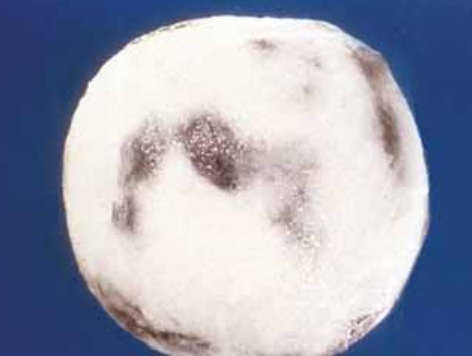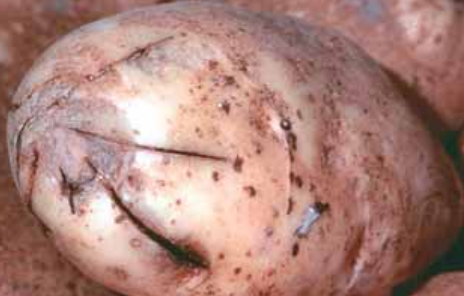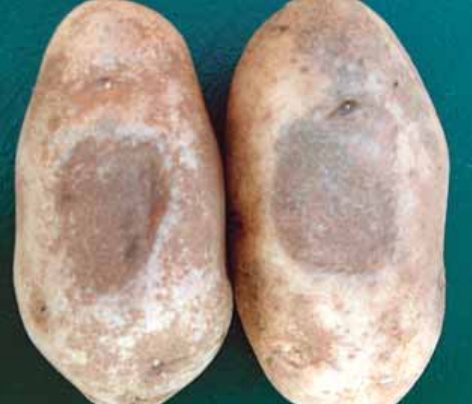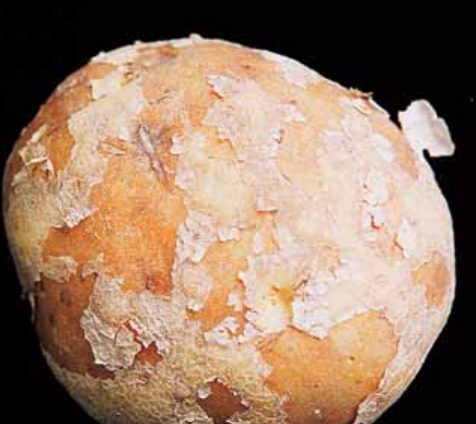If potatoes are treated roughly during harvest, storage or handling, the tubers may suffer varying degrees of damage.
Blackspot Bruising
Blackspot bruising is an internal discolouration caused by an impact that injures the tissue beneath the skin.
Discolouration of the damaged tissue is observed 6-8 hr after bruising occurs. Black spot is more common in tubers that have reduced water content and in tubers
harvested cold.
Bruised areas vary in size and shape but usually do not break the skin or penetrate deeper than 5 mm into the tuber. The stem end is more susceptible to black spot
than is the bud end.

White Knot Bruise
White knot bruise has been detected in chipping potatoes. The damage is similar to blackspot bruise but is white-coloured.
White knot forms a hard spot when the tubers are processed.

Shatter Bruise
Shatter bruising is caused by a mechanical impact that splits or cracks the tuber. Well-hydrated or turgid potatoes are more susceptible to shatter bruise. Cool pulp
temperature during harvest or handling increases the incidence of shatter bruising.

Pressure Bruise
Pressure bruises occur in stored tubers because of the weight of the overlying potato pile. Potatoes are most susceptible to pressure bruising when the storage
humidity drops below 90% and the tubers lose moisture.
Tissue below the pressure bruise is susceptible to blackspot bruising.

Skinning, Feathering
Skinning damage usually occurs when tubers are harvested immature.

